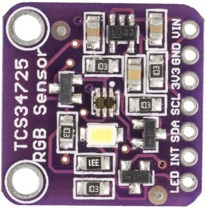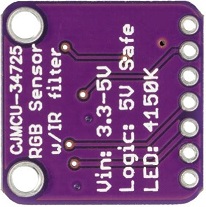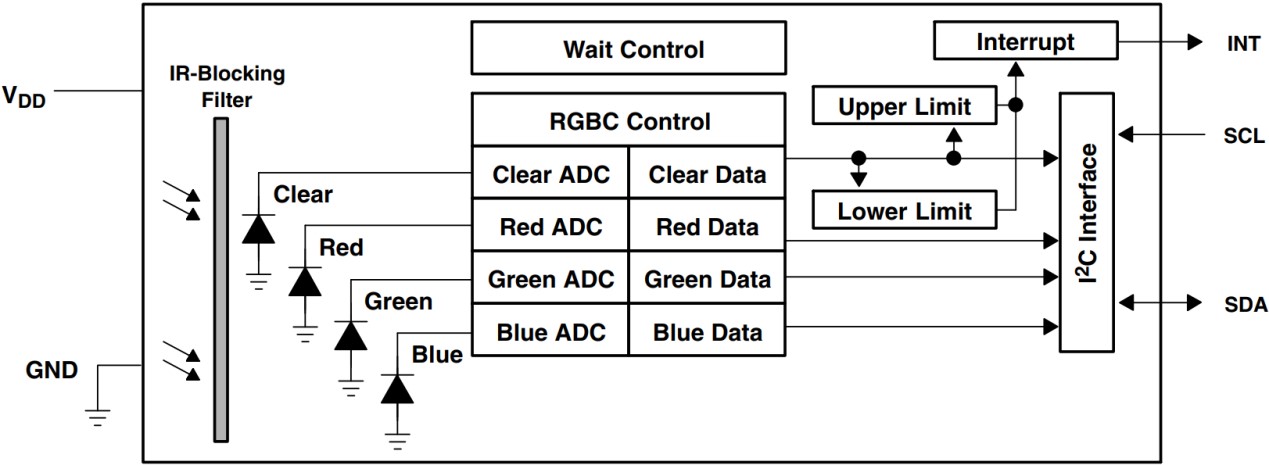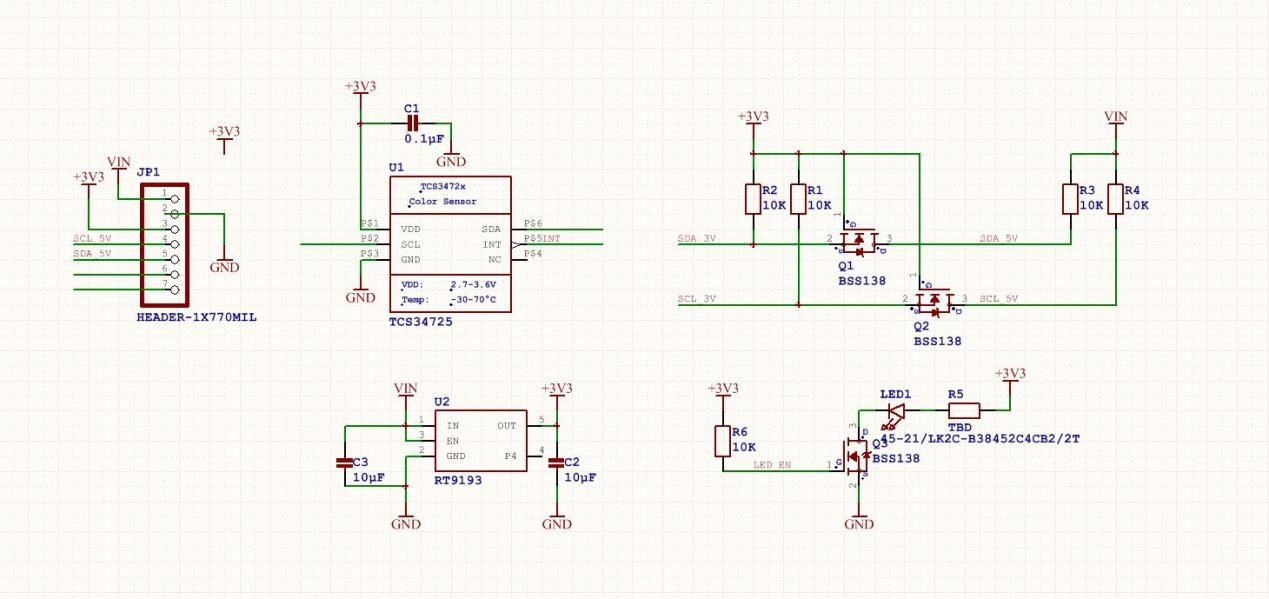TCS34725 RGB Color Sensor Module
Contents
Product Introduction


The TCS34725 device provides a digital return of red, green, blue (RGB), and clear light sensing values. An IR blocking filter, integrated on-chip and localized to the color sensing photodiodes, minimizes the IR spectral component of the incoming light and allows color measurements to be made accurately. The high sensitivity, wide dynamic range, and IR blocking filter make the TCS34725 an ideal color sensor solution for use under varying lighting conditions and through attenuating materials.
Main Features
- Red, Green, Blue (RGB), and Clear Light Sensing with IR Blocking Filter
- Programmable Analog Gain and Integration Time
- 3,800,000: 1 Dynamic Range
- Very High Sensitivity — Ideally Suited for Operation Behind Dark Glass
- Maskable Interrupt
- Programmable Upper and Lower Thresholds with Persistence Filter
- Power Management
- Low Power — 2.5-μA Sleep State
- 65-μA Wait State with Programmable Wait State Time from 2.4 ms to > 7 Seconds
- I 2 C Fast Mode Compatible Interface
- Data Rates up to 400 kbit/s
- Input Voltage Levels Compatible with V DD or 1.8 V Bus
- Register Set and Pin Compatible with the TCS3x71 Series
- Small 2 mm x 2.4 mm Dual Flat No-Lead (FN) Package
Introduction of Pins
| Pin Introduction | |
|---|---|
| LED | Interrupt output when the level is low. |
| INT | Interrupt – open drain(active low). |
| SDA | I2C serial clock input terminal – clock signal for I2C serial data. |
| SCL | I2C serial data I/O terminal – serial data I/O for I2C. |
| 3V3 | To 3v3 |
| GND | Power supply ground. All voltages are referenced to GND. |
| VIN | Supply voltage. |
Principle

The TCS3472 light-to-digital converter contains a 3 × 4 photodiode array, four analog-to-digital converters (ADC) that integrate the photodiode current, data registers, a state machine, and an I2C interface. The 3 × 4 photodiode array is composed of red-filtered, green-filtered, blue-filtered, and clear (unfiltered) photodiodes. In addition, the photodiodes are coated with an IR-blocking filter. The four integrating ADCs simultaneously convert the amplified photodiode currents to a 16-bit digital value. Upon completion of a conversion cycle, the results are transferred to the data registers, which are double-buffered to ensure the integrity of the data. All of the internal timing, as well as the low-power wait state, is controlled by the state machine. Communication of the TCS3472 data is accomplished over a fast, up to 400 kHz, two-wire I2C serial bus. The industry standard I2C bus facilitates easy, direct connection to microcontrollers and embedded processors.
In addition to the I2C bus, the TCS3472 provides a separate interrupt signal output. When interrupts are enabled, and user-defined thresholds are exceeded, the active-low interrupt is asserted and remains asserted until it is cleared by the controller. This interrupt feature simplifies and improves the efficiency of the system software by eliminating the need to poll the TCS3472. The user can define the upper and lower interrupt thresholds and apply an interrupt persistence filter. The interrupt persistence filter allows the user to define the number of consecutive out-of-threshold events necessary before generating an interrupt. The interrupt output is open-drain, so it can be wire-ORed with other devices.

Experimental Procedures for Arduino
Step 1: Connect the circuit:
| SDA | A4 |
| SCL | A5 |
| GND | GND |
| 3V3 | 3V3 |
| INT | |
| LED | |
| VIN |